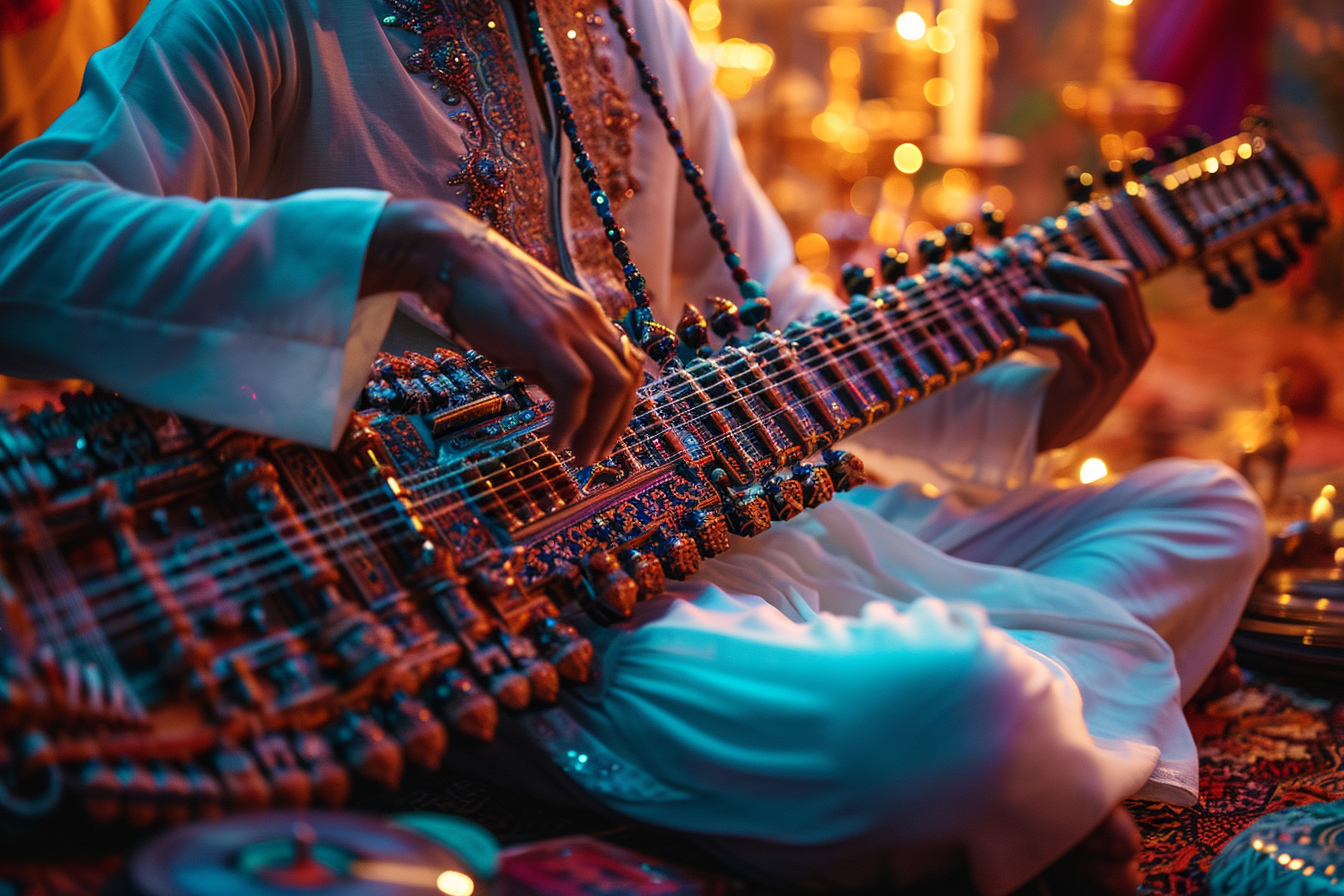The electric sitar, a modern twist on the traditional Indian string instrument, has secured a unique place in the world of music, capturing the fascination of musicians and music enthusiasts alike. Though it’s steeped in the rich tapestry of classical Indian music, the electric sitar’s allure has transcended cultural boundaries, making it a staple in various genres including rock, pop, and jazz. As we seek to decode the mystique of this instrument, we’ll delve into the essential considerations that musicians must weigh when selecting an electric sitar, ensuring that it resonates with their artistic intentions and complements their musical journey.
Understanding the electric sitar
Before venturing into the selection process, it is imperative to grasp what an electric sitar is and how it differs from its acoustic predecessor. The electric sitar is an adapted version of the classical sitar, amplified through pickups similar to those found in electric guitars. Unlike the traditional sitar, which relies on an acoustic body for resonance, the electric counterpart can connect to sound systems for live performances and recording sessions, thus widening its appeal among diverse musical circles.
Sound quality: the soul of the sitar
The cornerstone of any musical instrument is its sound quality, and the electric sitar is no exception. When selecting an electric sitar, musicians should prioritize how well the instrument emulates the authentic sitar tone. The twang and buzz, signature to the traditional sitar sound, should be evident in its electric variant. Additionally, exploring the tonal range and seeing if it complements one’s style of music is vital. The electric sitar should offer a palette of sonic options, from crisp, clean notes to more distorted, experimental tones.
Pickup configuration
The pickup, a critical component in any electric instrument, greatly influences the sitar’s sound. When choosing an electric sitar, one must examine the pickup configurations available. Some models come equipped with single-coil pickups, offering a bright and sharp tone, while others may feature humbucker pickups, known for their thicker sound and resistance to interference.
Tone adjustability
Another key consideration is tone adjustability. Musicians should opt for electric sitars that provide comprehensive tone controls, allowing them to fine-tune the instrument’s sound to their personal preferences and the requirements of different musical genres. The availability of tone knobs, switches, and equalizer settings can profoundly affect the sitar’s versatility.
Playability: the interface with the instrument
The ease with which a musician interacts with their instrument forms the crux of the musical expression. As such, the playability of the electric sitar is a dimension that cannot be overlooked. Features such as the neck’s shape, the action of the strings, and the weight of the instrument collectively contribute to the overall playing experience.
Neck comfort
A comfortable neck is a prerequisite for any stringed instrument. An electric sitar with an ergonomic neck design will accommodate extended play without causing strain. Musicians must consider the profile and width of the neck to ensure it suits their hand size and playing style.
String action
The action, or the distance between the strings and the fretboard, significantly impacts playability. Low action facilitates faster playing but may compromise the sound quality with unwanted buzzing. Meanwhile, high action enhances sound quality at the expense of playability. Finding an electric sitar with adjustable action promises the best of both worlds.
Weight distribution
Unlike the traditional sitar, which is generally played seated, the electric sitar can be played standing up, akin to an electric guitar. Consequently, weight distribution becomes a critical factor. A well-balanced electric sitar minimizes fatigue and allows the artist to focus on the performance.
Durability: a testament to longevity
Durability is a testament to the instrument’s longevity. Investing in an electric sitar with solid construction and reliable hardware is essential. This means scrutinizing the instrument’s body, the quality of the materials used, and the robustness of the hardware parts such as tuning pegs, pickup selectors, and bridges.
Body construction
The body of the electric sitar primarily dictates its durability and resonance. Quality instruments typically feature bodies made from seasoned woods known for their acoustic properties, such as maple or rosewood. Additionally, the craftsmanship of the instrument, including the joints and finish, should be closely examined.
Hardware quality
The quality of hardware parts is crucial as they hold the instrument together and play a role in tuning stability. Musicians must seek out electric sitars with sturdy tuning machines, durable bridges, and solid pickups that can withstand the rigors of regular use.
Aesthetics: visual harmony with sound
The aesthetic appeal of an instrument often reflects the musician’s personality and stage presence. While sound and playability are paramount, the visual aspect of an electric sitar should harmonize with its melody. The instrument’s design, color, and embellishments can inspire creativity and become an extension of the artist’s identity.
Design and finish
The design and finish of the electric sitar matter not just for aesthetic value but also for the image it projects on stage. Whether the preference is for a traditional look with intricate carvings or a sleek, modern design with a glossy finish, the physical appeal should not be discounted.
Customization options
For musicians looking to personalize their instrument, the availability of customization options is crucial. From interchangeable parts to custom paint jobs, personalizing an electric sitar can make the instrument truly one’s own.
Budget considerations

Budget will inevitably play a role in the selection process. It’s important to balance cost with quality to find an electric sitar that offers the best value for money. While higher-end models may offer superior sound and build quality, mid-range and entry-level instruments can also serve well, especially for beginners or those on a tighter budget.
Price vs. quality
A higher price tag doesn’t always guarantee a better electric sitar, nor does a lower price imply inferior quality. Musicians should weigh the instrument’s features against its cost to determine if the investment is justified.
Long-Term value
Looking beyond the initial purchase price to the instrument’s long-term value is wise. A durable, high-quality electric sitar may have a higher cost upfront but can save money in the long run by avoiding frequent repairs or replacements.
Brand reputation and reviews
Researching the reputation of brands and reading reviews from other musicians can provide valuable insight into the quality and performance of different electric sitars. Brands with a history of producing quality sitars are generally a safer bet. At the same time, reviews can highlight common issues or particularly praised features.
Testimonials from professionals
Endorsements or testimonials from professional musicians who use electric sitars can be telling. Their experiences and preferences can serve as a guide for others looking to make an informed decision.
Community forums and user feedback
Engaging with the music community through forums and reading user feedback offers a well-rounded perspective on the instrument. Fellow musicians can share their hands-on experiences and provide practical advice on what to look for and what to avoid.
Final thoughts on making your choice

Choosing the right electric sitar can be a harmonious blend of art and pragmatism. The combination of sound quality, playability, durability, aesthetics, and budget will lead musicians to an instrument that not only amplifies their music but also emboldens their creative spirit. Whether one is at the verge of starting a musical journey or looking to add a melodious edge to their established repertoire, the electric sitar stands as a testament to the innovation and evolution of musical expression. As the quest to master melody continues, the electric sitar emerges as a pivotal companion, resonating with the timeless cadence of the past while forging a vibrant symphony for the future.
Navigating the rich soundscape of the electric sitar requires a keen ear for tonal quality, a discerning eye for craftsmanship, and an awareness of one’s own musical inclinations. With these tips, any musician can be well-equipped on the path to finding an electric sitar that is not just an instrument, but a partner in their melodious expedition. As the journey unfolds, the chosen sitar will serve as the canvas upon which a tapestry of musical tales will be woven, each note a vibrant stroke in a larger masterpiece of sonic artistry.